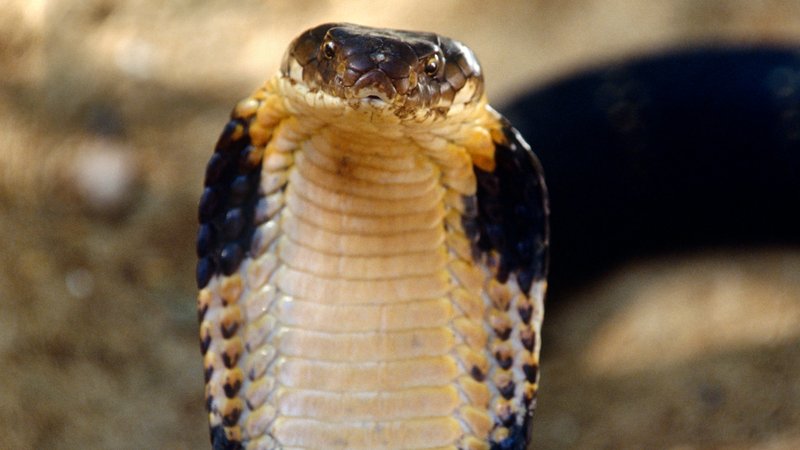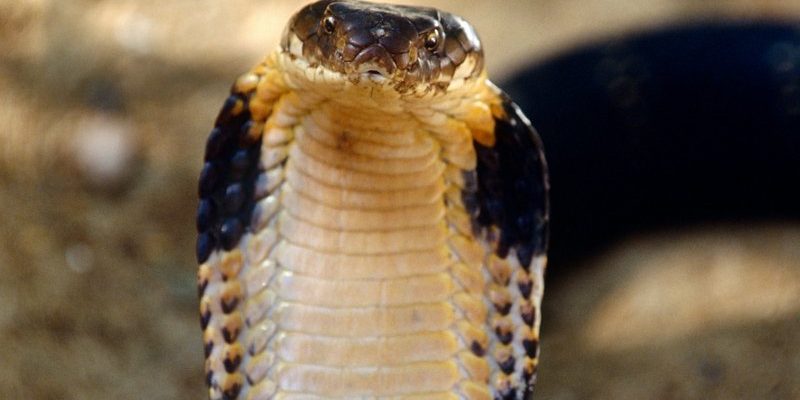
Imagine a long, winding river, constantly changing and shaping the land around it. The evolutionary journey of the king cobra is somewhat like that river—full of twists and turns, influenced by its environment. From its origins millions of years ago to its current status as a top predator in Southeast Asia, let’s explore how this magnificent serpent has evolved and adapted over time.
Origins of the King Cobra
The king cobra (Ophiophagus hannah) is part of the family Elapidae, which includes several other venomous snakes like cobras and mambas. Its ancestors date back millions of years to the Cretaceous period, when snakes first evolved from lizard-like reptiles. During this period, these early snakes began adapting to a variety of environments, leading to the diverse species we see today.
One of the key adaptations that set the king cobra apart is its size. Unlike smaller elapids, the king cobra can grow up to 18 feet long, making it the longest venomous snake in the world. This size not only intimidates potential threats but also allows it to prey on larger animals, such as other snakes. You might wonder how this snake developed such impressive dimensions. It’s all about survival—larger snakes can cover more ground, find mates, and defend themselves against predators more effectively.
Moreover, the king cobra has a unique method of hunting and eating. It primarily feeds on other snakes, which is quite uncommon among snakes. This specific diet is reflected in its scientific name, “Ophiophagus,” meaning “snake-eater.” By specializing in this niche, the king cobra has effectively minimized competition for food and carved out a unique ecological role for itself.
Adaptations Over Time
As the king cobra evolved, its adaptations helped it survive in diverse habitats—from dense forests to open grasslands. One striking feature is its ability to expand its hood when threatened. This not only makes the snake appear larger but also wards off potential predators. Imagine a peacock spreading its feathers; in a similar way, the king cobra showcases its full potential during confrontations.
In terms of venom, king cobras have developed one of the most potent toxins in the snake world. Their venom is primarily neurotoxic, which means it targets the nervous system of their prey, leading to paralysis and eventual death. This adaptation allows them to immobilize even large snakes quickly. As their evolutionary journey progressed, their venom evolved to meet the demands of their unique diet and hunting styles, ensuring they could efficiently take down their prey.
Another fascinating adaptation is the king cobra’s ability to blend into its surroundings. Their coloration often mirrors the forest floor—or the branches and leaves in their habitat—allowing them to ambush prey effectively. This camouflage is a critical survival mechanism, helping them evade both predators and humans.
Environment and Habitat
The king cobra primarily inhabits the tropical forests of Southeast Asia, but it’s versatile enough to thrive in varied environments, such as mangroves and grasslands. These habitats are rich in biodiversity, supporting the king cobra’s diet and offering hiding spots for ambush hunting.
As you think about their environment, remember that king cobras are often found near water sources. This connection to water is crucial for hydration and hunting. They can frequently be spotted basking in the sun, which helps regulate their body temperature. Here’s the thing: by being adaptable and resourceful, the king cobra has secured its place in the food chain, despite the ever-changing environment.
However, their habitats face threats from deforestation and human expansion. Urbanization has led to habitat loss, which poses challenges for these magnificent snakes. Without suitable environments, their survival could be at risk. Understanding their habitat helps us appreciate the importance of conservation efforts aimed at protecting these ecosystems.
Role in Culture and Mythology
The king cobra has long captivated human imagination. In many cultures, it symbolizes power and danger. For instance, in Hindu mythology, the king cobra is associated with Lord Shiva and is revered for its strength and grace. This cultural significance further emphasizes the snake’s majestic presence in our collective consciousness.
Many traditional societies in Southeast Asia regard the king cobra with both fear and respect. Some even participate in rituals to honor the snake, believing it embodies the spirit of the wilderness. By understanding these cultural narratives, we can appreciate why the king cobra holds such an esteemed place in folklore and local customs.
However, the fear surrounding king cobras often leads to misunderstandings. Many people view them as dangerous, resulting in conflicts when humans encroach on their territory. Education is vital in promoting coexistence with these beautiful creatures, highlighting their ecological role rather than stigmatizing them.
Conservation Challenges
Despite its status as a top predator, the king cobra faces serious threats. Habitat destruction, climate change, and illegal wildlife trade significantly impact their populations. As we’ve already touched on, urban development and deforestation have led to the loss of their natural habitats, making it harder for them to find food and mates.
Illegal hunting is another concerning issue. Many people target king cobras for their skin, meat, and even for the exotic pet trade. This demand not only shrinks their population but also disrupts local ecosystems where they play a crucial role. Honestly, the survival of the king cobra impacts many other species, as it helps maintain the balance within its habitat.
In recent years, conservation efforts have been ramping up. Organizations are working to strengthen laws that protect king cobras from illegal trade and educate communities about the importance of these snakes. It’s a step in the right direction, but more awareness and action are needed to ensure the survival of this majestic creature for future generations.
The Future of the King Cobra
Looking ahead, the king cobra’s future largely depends on human actions. If we can create a more sustainable relationship with nature, there’s hope for the survival of this remarkable snake. Conservation programs aimed at preserving their habitats and combating illegal trade are essential for their longevity.
It’s also crucial for us to foster a sense of respect towards these snakes. Understanding their role in the ecosystem can shift our perception from fear to admiration. We can learn from the way they adapt and thrive, reminding us of nature’s resilience.
By spreading awareness and promoting education, we can help ensure that the king cobra continues to reign as a vital part of our planet’s biodiversity. Let’s work together to protect not only the king cobra but also the rich ecosystems they inhabit.
In conclusion, the evolutionary history of the king cobra is a captivating tale of survival and adaptability. From its ancient origins to the challenges it faces today, this remarkable snake remains a symbol of power and grace in the animal kingdom. Let’s celebrate and protect the king cobra, ensuring that it continues to inspire awe for generations to come.

